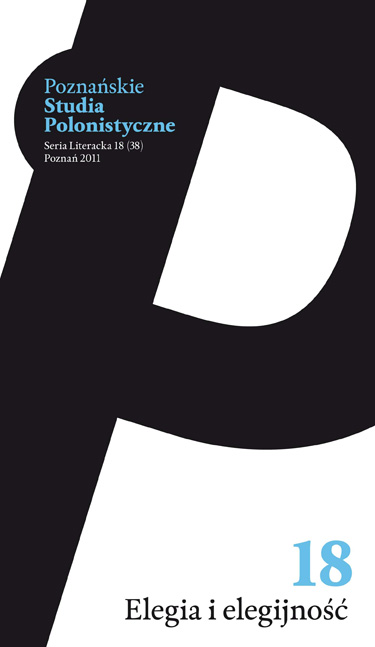Elegia na progu. Antyczne dziedzictwo motywu paraklausithyron w twórczości elegijnej renesansu (usque ad Ioannem Cochanovium)
Elegy on a threshold. Classical heritage of the paraklausithyron motif in the Renaissance elegiac poetry (usque ad Ioannem Cochanovium)
Author(s): Grażyna Urban-GodziekSubject(s): History, Language and Literature Studies, Studies of Literature, Philology, Theory of Literature
Published by: Wydawnictwo Poznańskie Studia Polonistyczne
Keywords: paraclausithyron; exclusus amator [shut-out lover]; serenade; Neo-Latin poetry; Jan Kochanowski; Giovanni Pontano; Cristophoro Landino
Summary/Abstract: Paraklausithyron — a lover’s lament at the closed door of the beloved, desiring entry, is a very old literary and musical motif, deriving from the archaic genre of komos, characteristic for Greek comedy. Paraklausithyron was successfully adopted by Roman literature to become one of the basic motifs of love elegy in the Roman Empire of Augustan times. The present study explores the history of the motif and outlines the main features of its Roman variety. Then, its reception in Italian elegiac poetry of the Renaissance period is presented, and, within this context, the use of the motif in elegies written in Latin and Polish by Jan Kochanowski is discussed. Vigils at the beloved one’s door are presented here as an essential element of an elegiac confession of love containing a characteristic line of arguments and distinguishable key words which, in the course of time, came to substitute the motif and the confession of love itself. The motif also pervaded other forms of modern lyric love poetry, in particular the serenade; just as the elegiac sense of love initiated the sentimental trend in European poetry.
Journal: Poznańskie Studia Polonistyczne. Seria Literacka
- Issue Year: 2011
- Issue No: 18
- Page Range: 45-82
- Page Count: 38
- Language: Polish

